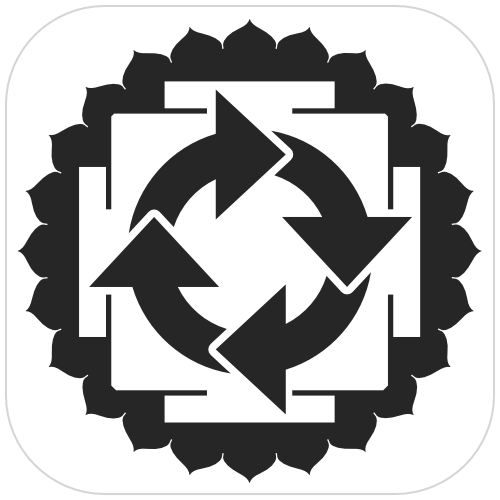Use the following process as a rough guide. You may want to move back and forth between the steps as your thinking gets clearer.
Establish context and goals with the Context Canvas

- Take stock of the people (esp. beneficiaries) involved: where are they, what do they need, how are they feeling?
- Take stock of the design space: goals, structures, spaces, people, symbols, resources, energy, etc.
- Articulate a set of core goals for the ritual
Fill in whatever helps you think and feel free to ignore the rest.
Clarify intentions using the Intent Cards…

- Select a set of intentions for your ritual. Think about what you want to accomplish.
- If it makes sense to, sequence the intentions into a rough flow for your ritual
It can help to do this with the people you are designing for.
At this point you may find that you have made sense of your situation enough that you don’t need to design a ritual any more.
This is normal! In our experiences helping others design rituals, it often turns out that someone just needed an excuse to sit down and devote some time to understanding and orienting towards where they are.
Envision flow with the Ritual Flow Map

- Using the intent cards selected, map intentions to various points in the flow
- Use the detailed version of the flow map, consider how you will craft the elements of the ritual’s flow
You may end up with multiple versions of the flow before you find one that you like.
Select activities from the Method Cards

- Identify or create methods that embody the intentions, and map them to the flow
- Record your ritual’s design as a script to follow, perhaps adding facilitator’s notes if needed
These cards are just for inspiration, so feel free to use activities you’ve created or experienced.
Play/test
- Map out how the ritual might be experienced by different kinds of people. What if someone is shy? Or differently-abled? etc.
- Playtest this with your audience/allies, and use that to refine the design, including discovering and supporting outcomes you didn’t anticipate. Pay attention to how it feels. A well-designed ritual should be emotionally engaging.
Ground & prep to facilitate confidently
Bring and arrange whatever support you’ll need to feel confident as you facilitate: notes, materials, food, water, a friend to help. But remember that the quality of your presence real-time is the most important thing, not how thorough your preparation was beforehand.
Some principles to keep in mind
When designing …
- Make sure you’re in a good state of mind. A state of mind conducive to what you’re trying to do
- Think about PEOPLE the whole time. Not concepts or structures. Those things just support, prompt, structure, catalyze, and connect or divide people. Anchor to feelings more than thoughts. As you’re in the midst of it, be present to people.
- Think about and engage all of the senses: don’t forget about touch and smell. Acknowledge these things.
- Stand up, act it out. Embody it. Play test it. Feel into it. How does it feel?
- Design in-context…
- Before the ritual/ meeting… get comfortable with the space and the stuff in it. These are all raw materials.
- If you’re at an event or gathering… pay attention to how people use space, how the space supports people. Where are people congregating naturally, what memories are being created, what relationships are forming, what memes and catch phrases are uniting or dividing people…. seek to recognize, memorialize, amplify, symbolize, commemorate, or carry forward these things.
When facilitating…
- Make sure you’re supported with the basics (unless the lack of these basics are part of the transformation process).
- Water
- Food
- Thermal comfort
- Be willing to be surprised. If everything goes 100% according to plan, or if it feels easy, it might be a red flag. It’s a living thing. Transitions can be hard. “Mistakes” will be made by you and others.
- Listen, always be listening.
